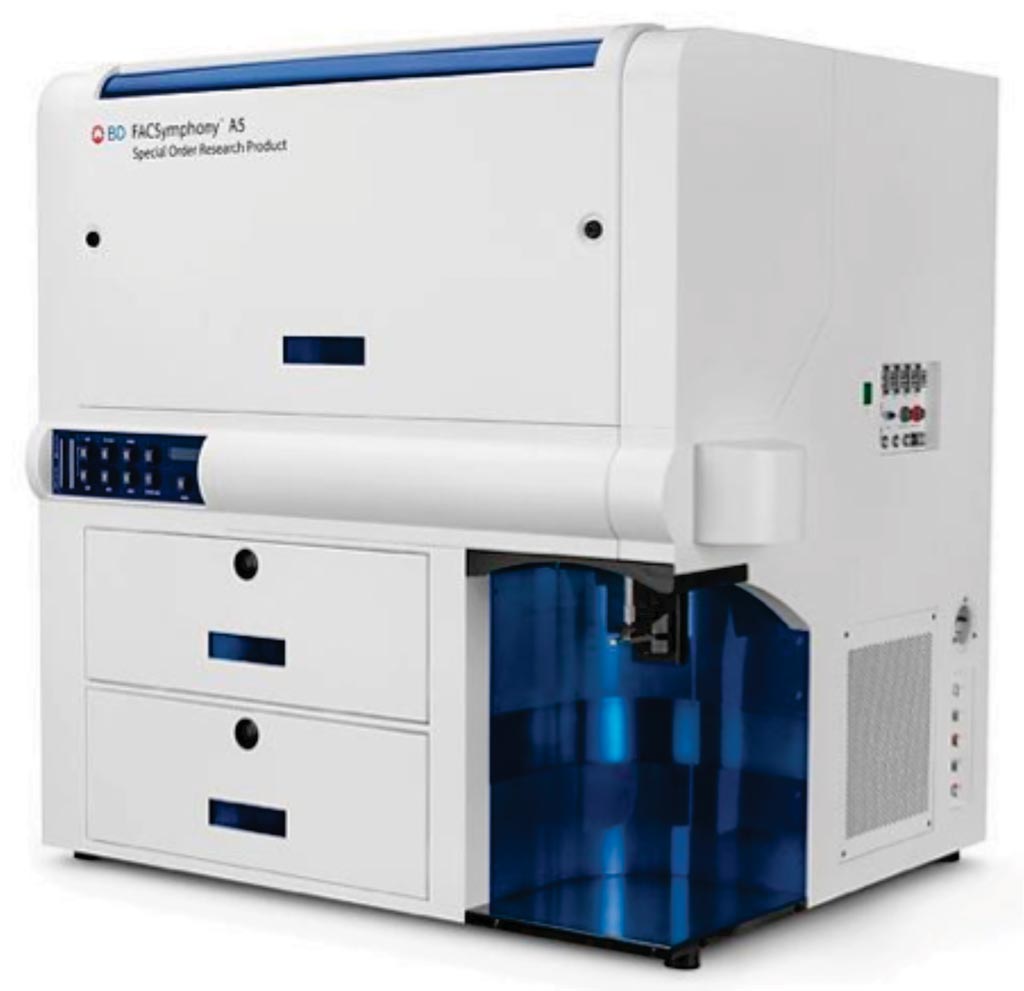T Follicular Helper Cells Retain Lymphoid Characteristics
By LabMedica International staff writers
Posted on 14 Aug 2019
T follicular helper cells (Tfh) are a subset of CD4+ T cells that provide B cell help within the follicles of secondary lymphoid tissues. Tfh promote B cell class switching and affinity maturation, and without Tfh help, germinal centers (GC) fail to form.Posted on 14 Aug 2019
Some Tfh cells in lymph nodes uniquely express the surface receptor protein CXCR5 and the inhibitory molecule PD-1. Blood does contain some Tfh cells with theses markers; however, scientists have long debated whether Tfh cells exit lymph nodes and circulate in the blood with traces of their original markers.

Image: The FACSymphony A5 system is a novel cell analyzer that leverages the inherent benefits of flow cytometry and enables the simultaneous measurement of up to 50 different characteristics of a single cell (Photo courtesy of BD Biosciences).
A large team of scientists working with the University of Pennsylvania School of Medicine (Philadelphia, PA, USA) assessed the cell surface markers of Tfhs collected from human thoracic ducts, the main, yet difficult to access, "drainpipe" carrying fluid from the lymph system to the blood stream. To learn how characteristics of Tfh in blood connect to the lymph system, the team compared Tfhs from lymph node GCs to Tfh cells in lymph fluid and to those in the blood. Samples were analyzed on three cytometers: LSRII and FACSSymphony A5 for phenotype as well as a FACSAria II for phenotype and sorting.
The team consistently identified "CXCR5-bright PD-1-bright" Tfh cells in lymph fluid at the duct. These doubly labeled Tfhs shared many epigenetic features and expressed similar proteins with Tfh cells in the GC. This means that the Tfhs sampled in the lymphatic duct are cellular intermediates connecting the biology of Tfhs in lymph tissue to Tfhs in blood, ultimately putting to rest the doubt that Tfhs in the blood reflect what happened in the lymph in the immediate past.
The team sees their newfound ability to match more easily obtained samples in the blood with earlier immune events deep in the node as being clinically useful for a variety of applications. From assessing when patients are ready to receive vaccines after bone marrow transplants to measuring how first-line immune treatments for people with inflammatory bowel disease (IBD) or certain types of cancers affect the broader immune system, use of their new "periscope" approach opens the door for more personalized treatment plans.
E. John Wherry, PhD, a Professor of Immunology and lead author of the study, said, “The cells we're looking for in the bloodstream are 0.1% of all cell types circulating in the blood. But our 'periscope' allows us see what that rare cell type can tell us about immune system events that have happened in a distant part of the body.” The study was published on August 1, 2019, in the Journal of Clinical Investigation.
Related Links:
University of Pennsylvania School of Medicine













